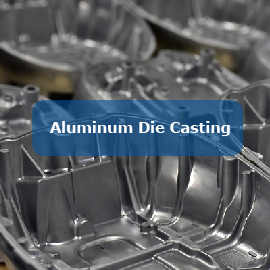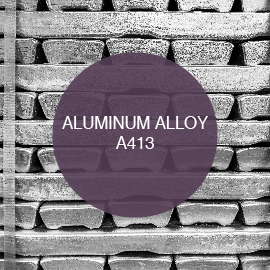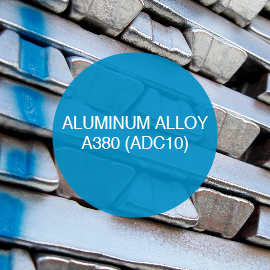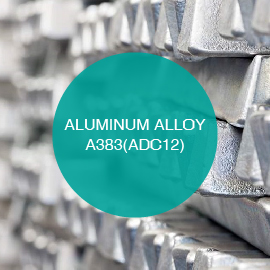ALUMINUM ALLOY AlSi12
One of the most widely used casting Al-Si alloys is called Aluminum Silicide 12, often known as AlSi12. This alloy works very well for the welding of cast aluminum parts, and it can also be used as a brazing alloy if the appropriate flux is used. It is well-known for its low weight in relation to its strength, as well as for the favorable thermal qualities it possesses.

AlSi12 Characteristics
The eutectic alloy AlSi12 has a melting point of 577 degrees Celsius, while the individual metals Al and Si melt at 660 degrees Celsius and 1414 degrees Celsius. Microscopically, raw AlSi12 alloy has a big well malleable alpha phase and a jagged and solid, nondeformable beta phase.
The low tensile strength and nearly zero elongation of the alloy are due to its unaltered phases of microstructure composition. Because of its relatively low melting point and limited freezing range, AlSi12 was first created for use as a brazing alloy. More silicon means more fluidity and less shrinking compared to AlSi5. When used as a filler alloy, AlSi12 greatly decreases the likelihood of hot cracking.
The alloy’s properties allow for use in environments with constant high heat. It cannot be heated for treatment. It’s recommended to preheat the thicker sections of the components created from this alloy to 150°C before welding. The welding part acquires a new color after anodizing.
Advantages
- Low cost
- Superior resistance against corrosion
- Low specific weight and high tensile strength
- Contraction is mild, in comparison
- Casting it is a breeze and can be done quickly
Applications
Because of the favorable qualities it possesses, this alloy is frequently used in the production of pistons for internal combustion engines. This aluminum alloy is great for putting metal pieces together in techniques such as extrusion and casting because it has qualities that make it suitable for welding and brazing. In addition to its widespread application in the domains of aviation, aerospace, racing, and automobile manufacturing, the AlSi12 is also commonly used for applications involving thin walls, such as the production of heat exchangers.
Equivalent grades of grade AlSi12(Fe)(a)
As there are some different alloy grades for AlSi12, here we are only talking about the AlSi12(Fe)(a), which from the number of ENAC-44300 and standard of EN 1706.
| EU EN | USA – | Germany DIN,WNr | Japan JIS | Inter ISO |
| AlSi12(Fe)(a) | A413.0 | GD-AlSi12 | ADC1 | AlSi2(Fe) |
Mechanical Properties
| Contents | Value |
| Brinell Hardness | 60 HBW |
| Tensile Strength | 240 MPa |
| Yield Strength | 130 MPa |
| Elongation | 1.00% |
Physical Properties
| Contents | Value |
| Elastic Modulus | 75 Gpa |
| Thermal Conductivity | 130-160 W/mK |
| Electrical Conductivity | 16-22 MS/m |
| Specific Heat Capacity | 0.90 J/g.K |
| Specific Weight | 2.68 kg/dm³ |
| Thermal Expansion | 20.10-6/K |
Alloy Composition
| Contents | Value |
| Aluminum (Al) | Balanced |
| Zinc (Zn) | max 0.15 |
| Silicon (Si) | 10.5~13.5 |
| Magnesium (Mg) | max 0.05 |
| Tin (Sn) | max 0.05 |
| Copper (Cu) | max 0.1 |
| Manganese (Mn) | max 0.55 |
| Nickel (Ni) | max 0.05 |
| Iron (Fe) | max 1.0 |
| Other | max 0.05 |
Contact us today if you want to learn more about which metal is right for your aluminum die casting projects.





